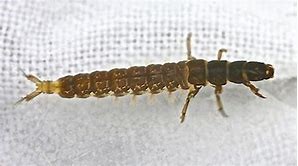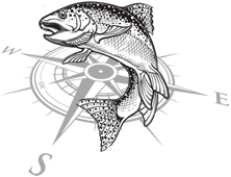Spotted Sedges (Tan Caddis)
Trichoptera, Hydropsyche

Gary LaFontaine author of the great book Caddisflies wrote “the Spotted Sedge is the most important trout stream insect” and I agree. I’m one of the anglers that has simply fallen in love with the caddis fly, the caddis hatch and the how trout love to feed on them. The Spotted Sedge is one of those caddis flies that are both abundant and the hatch is consistent. Almost every river I’ve ever fly fished in the west has a good “Sedge” hatch (Or any caddis hatch as far as that goes), it makes no difference to me what kind of river I may be fly fishing I can always count on a good caddis hatch.
The Spotted Sedge Caddis is an important caddis to Western fly fishermen because it’s a dominate caddis and can be found throughout the West. The Spotted Sedge is a net layer, it sort of spins a web where it catches its food in its web and feeds consistently on his and his neighbor’s webs. This is an important bug for you to get familiar with because it truly holds tailwater rivers (rivers formed by dams) as it’s kingdom. Man-made dams and diversions create a bio mas that will feed these guys throughout the year. They can inhabit a tailwater river by the millions if not billions. The “Sedge” hatches on some of these tailwater rivers can be so thick with Sedges that you can’t keep them off your face.
Spotted Sedges need fast moving water, rapids and long tailouts where the water is moving bringing plenty of food to fill their webs. Most tailwater rivers will provide these conditions with long moving tailouts where the bottom of the river is rocky with boulders and gravel. Spotted Sedges like all caddis flies go through a complete metamorphosis. That means during an emergence or hatch when the caddis pupa leaves the bottom of the river to swim to the surface it’s metamorphosis into an adult is finished. Once the Spotted Sedge breaks through the meniscus (surface film) and crawls out of its cuticle sleeping bag it will fly away as a complete adult. It will not linger on the surface; it may skittle around for a second or two but then it’s into the air. After leaving the surface the adult Sedge will fly to shoreline bushes or willows where it will mate. The Spotted Sedge, like most caddis flies prefers to emerge or hatch in the late afternoon or at sunset.
The fertile female Sedge will return to the river after mating to lay her eggs. This she does by landing on the surface of the river and diving to the bottom to deposit her eggs. Many fly fishermen who witness this event will often mistake it for a caddis hatch. This confusion can lead to missed fish later on during a real Sedge hatch. A good representation of an egg laying Sedge will be an adult artificial fly that represents the Spotted Sedge presented to feeding trout or where you believe trout to be. This will get you into some opportunistic trout but will fail for you during a full blown Spotted Sedge hatch. During most caddis hatches, certainly a Spotted Sedge hatch, the Spotted Sedge caddis experience a complete metamorphosis so therefore there won’t be many, if any, adult caddis on the surface. Instead the trout will be feeding on the emerging caddis pupa just in, on or under the meniscus.
Your catch rate will improve if you tie on an emerging caddis pattern such as a Soft Hackle to imitate the emerging Spotted Sedge. There are many great caddis emerger patterns available to you that will represent the emerging Spotted Sedge and most destination fly shops will have a pattern or two for you to choose from. Non destination fly shops are thin on their emerger patterns and you may have to resort to finding what you need on the internet which can be a crap shoot at best.
Mike Sandifer

